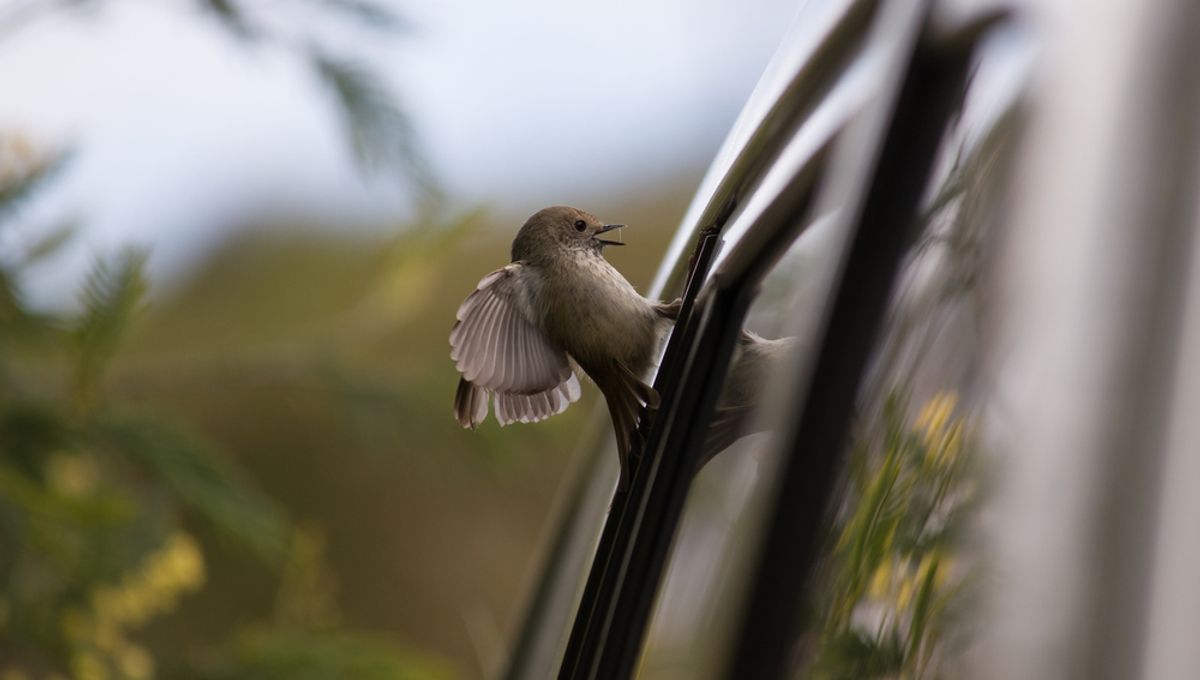
Birds are weird little creatures. They used to be the most terrifying predators the world has ever seen, and now they just spend their time getting drunk, facetiming their pals, and occasionally killing one in three humans across the globe. Oh – and, of course, tweeting.
And every so often, they go crazy and start attacking infrastructure. Whether it’s your house, your car, or McCormick Place Lakeside Center in Chicago, sometimes birds just love to fly at, peck, and otherwise bring to ruin, completely inanimate objects.
So, what’s going on? Well, it’s not some deep-seated hatred of the modern world manifesting itself in a recreation of Hitchcock’s The Birds – it’s just territory marking.
See, birds aren’t what you’d call the Einsteins of the animal kingdom – there’s a reason “bird-brained” means what it does. Unfortunately, it takes a particular level of cognition to be able to pass the mirror test – that is, to see your own reflection and understand that it’s not some other being staring back at you – and so, when these birds catch sight of themselves in a shiny piece of glass or metal, their immediate thought is not “hey, I’m lookin’ good today!” but “INTRUDER! KILL THE INTRUDER!”
It’s annoying – but from the bird’s perspective, it’s vitally important that they get rid of this rival. You may have noticed these attacks being more common during warm weather – that’s when the birds are staking out their nesting areas, ready to find mates and start making the next generation of window-attackers. Fighting off an interloper isn’t just a good idea for protecting your future eggs, it’s also a nice little advertisement to any potential mates out there who might want to make those eggs with you.
Still, it would probably be nicer for all involved if bird attacks could be avoided. Luckily, there’s some fairly simple things you can do to reduce the chances of them occurring – the most obvious of which is to remove the reflection the bird is getting annoyed at.
“Simple solutions can involve putting a non-reflective material, such as cling film or non-reflective cellophane, on the outside of a window,” suggests the British Trust for Ornithology. “Physically blocking access to windows with plants and hanging baskets might also help, while objects that dangle and catch the light and wind (e.g. strips of foil, CDs) could be effective.”
“It might also be worth placing a mirror near a window that is being attacked to provide an alternative reflection on which the bird can focus,” they add. “If multiple windows are being attacked in sequence, target a window early in the chain.”
An important thing to remember, by the way, is that these territorial attacks are not the same thing as bird strikes – when a bird thinks your window is just open sky, and flies directly (and sometimes violently) into it. When that happens, it’s less of an annoyance and more of a potential problem, and the bird may need your help.
So, if you come across a bird that just slammed itself into a building, first, check it’s alive – it can be difficult to tell the difference between death and concussion in birds, so if you aren’t sure, try gently moving its legs. “Birds go into rigor exceedingly quickly, like in a matter of minutes,” Rita McMahon, director of Wild Bird Fund in New York City, told The Audubon Society. “If the legs don’t move, the bird is dead. But if they move, the bird’s just unconscious.”
If the bird is alive, carefully pick it up, preferably using gloves, and take it to a wildlife rehabilitation specialist. If that’s not possible, keep it in a paper bag or shoebox in a dark, quiet room and leave it undisturbed for an hour or so – “then,” McMahon advised, “listen.”
“If you hear that bird tap-dancing around inside, he’s feeling better.” If not, call in the pros.
Source Link: Why Are Birds Attacking Your Windows?